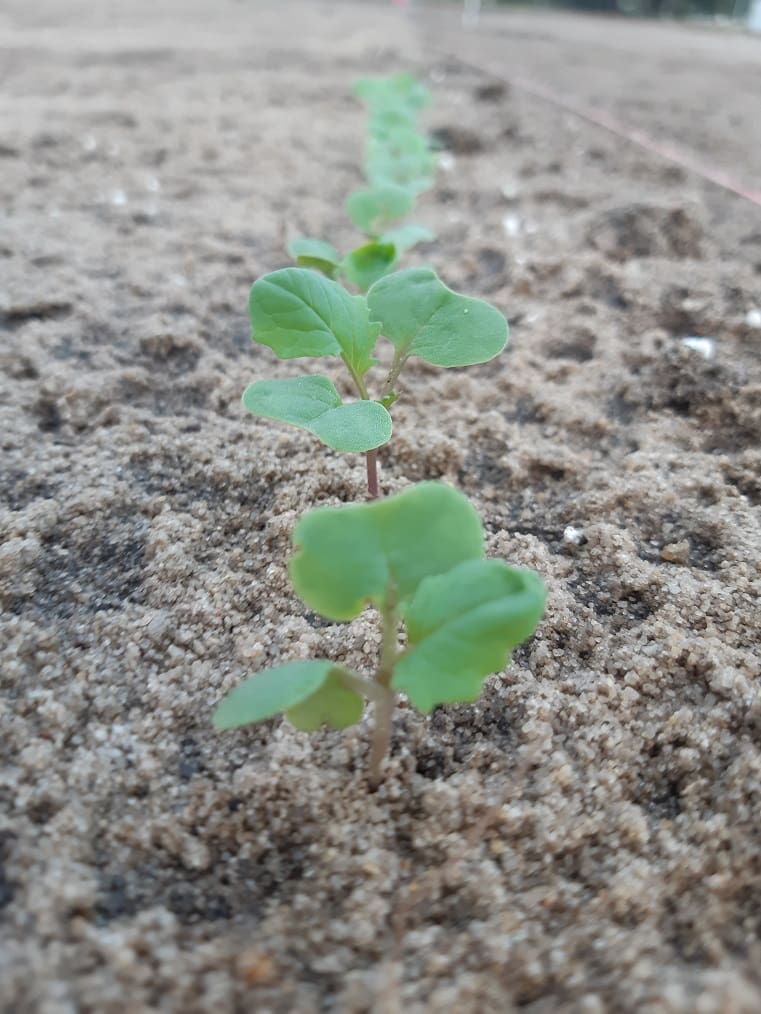WIDESPREAD rainfall across the Western Australian Grainbelt from tropical cyclone Seroja has set up an ideal start to the season – particularly for canola growers.
Research, including that by the WA Department of Primary Industries and Regional Development (DPIRD) with coinvestment from the Grains Research and Development Corporation, has shown early season rainfall will benefit canola varieties of all maturities.

Two-week-old ATR Bonito canola sown at DPIRD’s South Perth research plots. The early rainfall has set up a good season for planting any maturity of canola this season.
DPIRD research scientist Jackie Bucat said while hybrid varieties were in short supply, there was a range of other varieties growers could consider to suit their cropping programs.
Ms Bucat said early and early-mid season varieties out-yielded or had similar yields to the longer season varieties when sown mid-April, with the exception of very early varieties Hyola 350TT and ATR Stingray.
“The results showed the early-mid variety InVigor T4510 generally out yielded or had similar yields to the longer season varieties at all sowing times so using a high yielding variety is important,” Ms Bucat said.
Open pollinated varieties
Another option is the use of open pollinated (OP) varieties, which are likely to be as profitable as lower yielding hybrids.
Ms Bucat recommended using the biggest seed size and the highest planting densities to achieve optimal OP yields.
“It is advised to use seed graded over two millimetres and plant at a density of at least 40 plants per square metre, with a seeding rate of as high as four kilograms per hectare, to achieve the highest profitability,” she said.
Triazine tolerant hybrids
Another option is the use of retained seed of triazine tolerant (TT) hybrids graded and planted at 40 plants per square metre, however, there is the risk when using retained seed of variability in maturity and declines in yield, vigour and disease tolerance.
Ms Bucat said yield differences between hybrid TT that had been retained and fresh hybrid seed was likely to be greater in higher yielding situations than when yield potential was less than 1t/ha.
“In eight DPIRD trials where retained hybrid seed was sown at 40 plants/sq metre compared with commercial hybrid seed sown at 20-25 plants/sq metre, the retained seed yields were similar or higher than the commercial seed in six trials and significantly lower in only two trials,” she said.
“These were from low-mid yielding sites of 0.9 to 1.8t/ha and differences are likely to be greater in higher yielding sites.
“The use of good agronomy when sowing OPs is likely to be a better option than using retained TT seed.”
Source: DPIRD
For canola seeding rate information and to access DPIRD’s free Canola Seeding Rate Calculator visit agric.wa.gov.au

HAVE YOUR SAY